Are you eager to create something stylish and practical but feel overwhelmed by complex crochet patterns? Do you wish there was an easy way to start crocheting without feeling frustrated? Many beginners struggle to find simple projects that are both fun and rewarding.
Imagine sitting down with a crochet hook, only to get stuck on confusing instructions or end up with a scarf that doesn’t look quite right. The frustration can make you want to give up before you even get started. It’s disheartening when you’re excited to learn but can’t find beginner-friendly patterns that set you up for success.
But don’t worry—there’s a solution! This blog post will introduce you to five easy crochet scarf patterns perfect for beginners. These patterns are simple, quick, and designed to help you build confidence while creating something beautiful. Whether you’re making a cozy accessory for yourself or a thoughtful gift for someone else, these scarves are the perfect way to start your crochet journey. Let’s dive in and get those hooks moving!
Table of Contents
Why Crochet a Scarf: Benefits and Fun
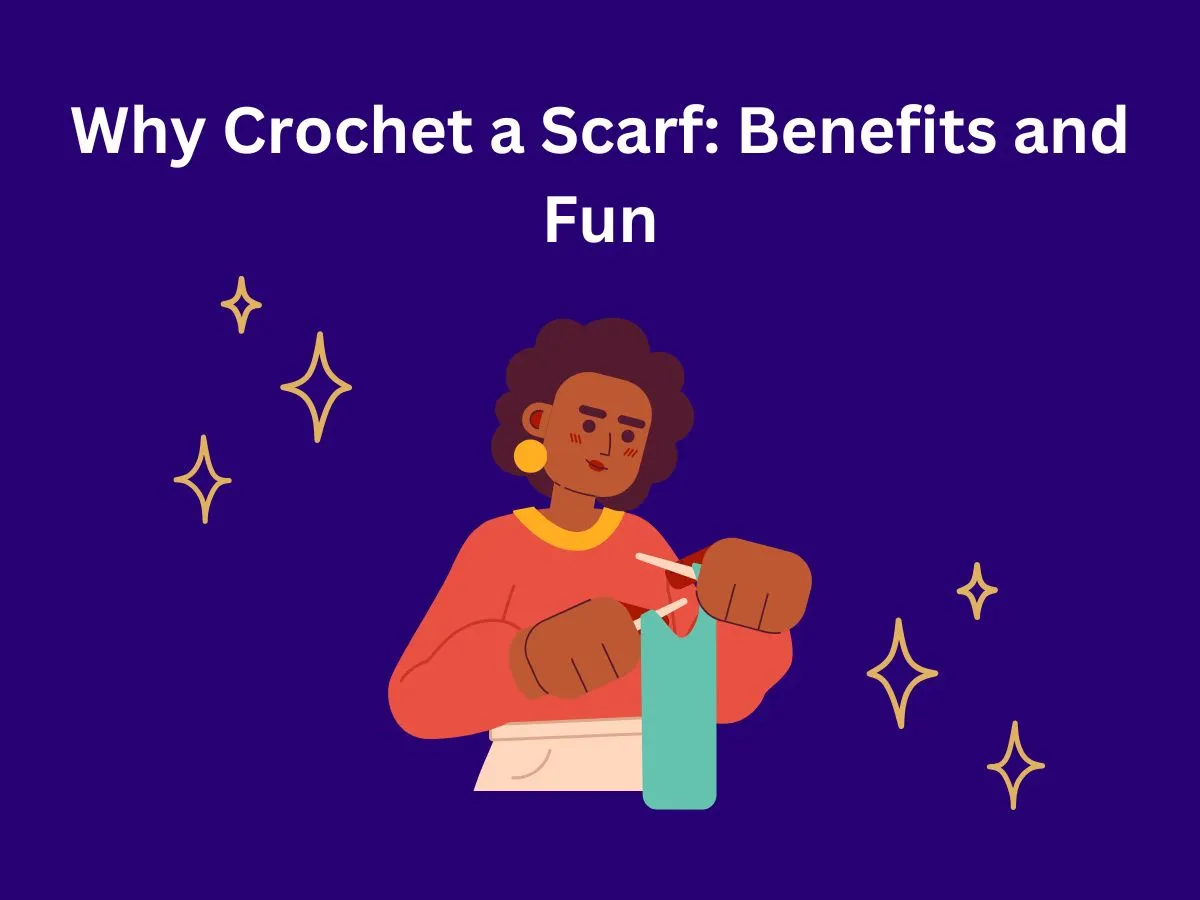
Crocheting a scarf is a great way to start your crochet journey. Scarves are simple projects that help you learn basic stitches and techniques. They’re perfect for beginners because they’re usually just rectangles, making them easy to shape. As you work on your scarf, you’ll practice important skills that will help you with future projects.
Crocheting has benefits beyond just making a cozy accessory. It can help reduce stress and anxiety, making it a relaxing hobby. The repetitive motions of crocheting can be soothing and meditative. Plus, there’s a great sense of accomplishment when you finish your scarf and can wear it proudly.
One of the best things about crocheting a scarf is that you can customize it to your liking. You can choose colors that match your style or experiment with different stitch patterns. This lets you create a unique piece that reflects your personality. Whether you’re making a scarf for yourself or as a gift, it’s a fun and rewarding project that combines creativity with practicality.
Choosing the Right Yarn for Your Scarf
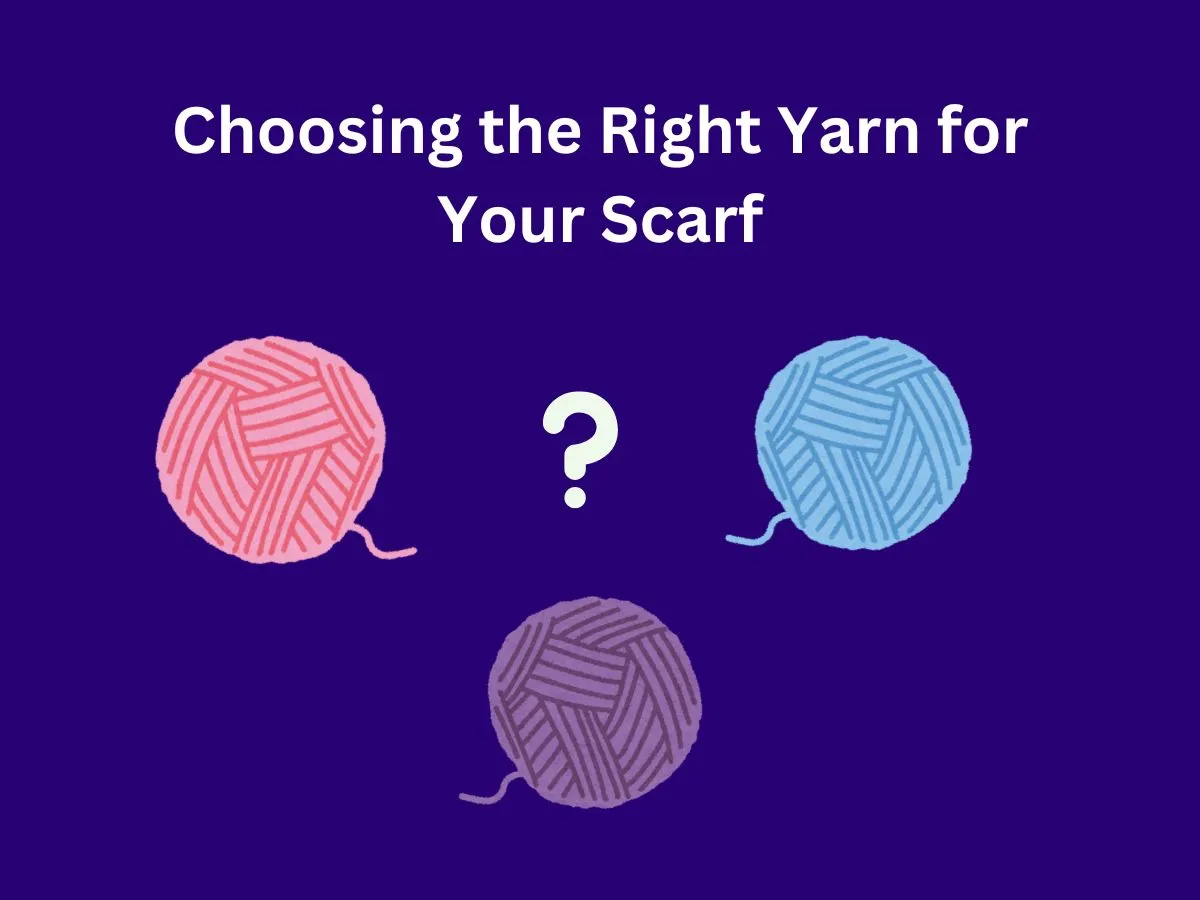
Picking the right yarn is key to making a great scarf. For beginners, medium weight (worsted) yarn is a good choice. It’s easy to work with and comes in many colors. Brands like Vanna’s Choice, Brava Worsted, and Loops & Threads Impeccable are popular options that are easy to find and use5. Understanding Crochet Gauge will help you choose the right material for your project.
When choosing yarn, think about who will use the scarf. If it’s for someone with sensitive skin, look for soft yarns. For cold winters, bulky or super bulky yarn will make a warm scarf. If you want a lighter scarf for spring, try a lightweight (3) yarn. Also, consider how easy the yarn is to care for. Many yarns are machine washable, which is great for scarves that get a lot of use.
Acrylic yarns are often a good choice for scarves. They’re durable, affordable, and easy to find in craft stores. They also come in many colors, so you can make your scarf exactly how you want it. If you prefer natural fibers, wool can be a good option. It’s warm and comes in different weights. Just remember to check if the person you’re making the scarf for has any wool allergies.
Essential Tools You’ll Need to Get Started
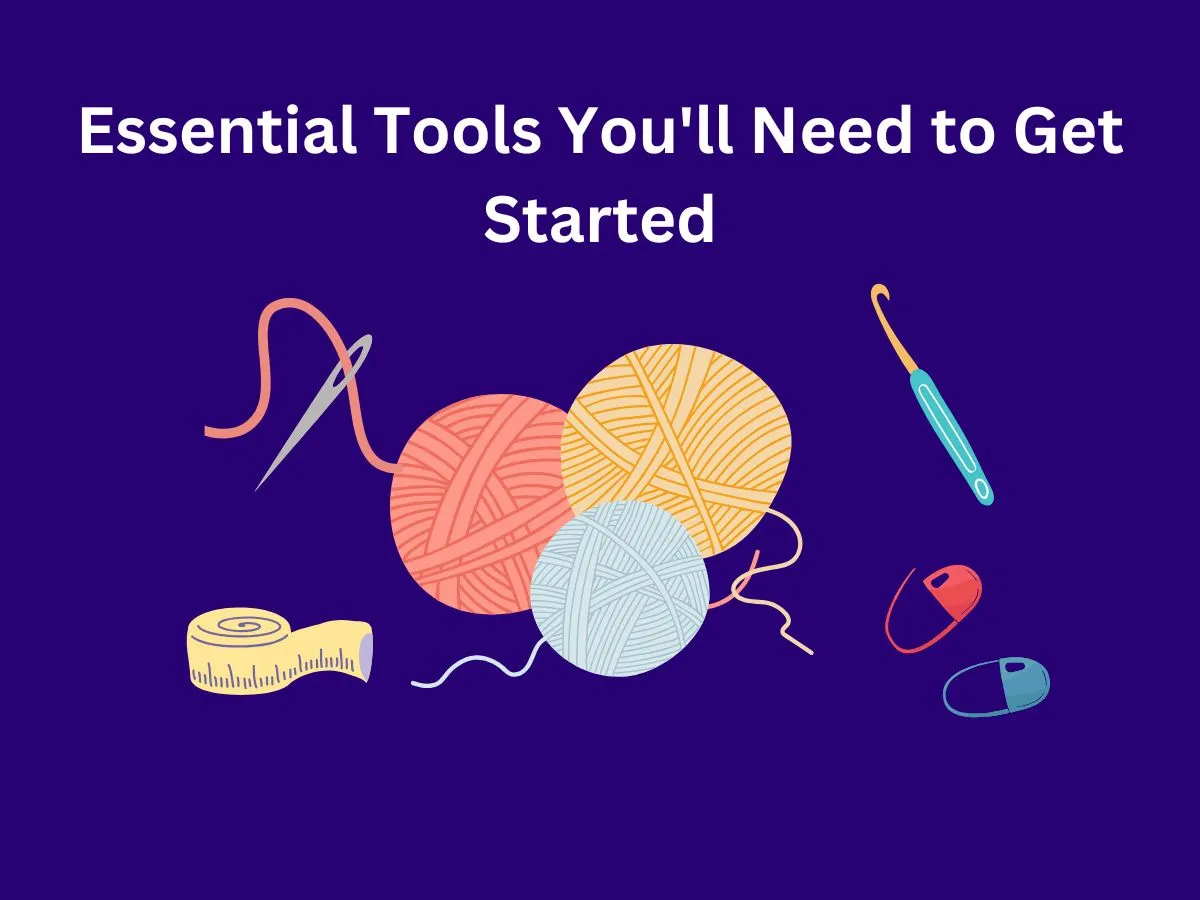
To start crocheting your scarf, there are a few essential tools you’ll need. The most important are a crochet hook and yarn. For beginners, a size H (5mm) crochet hook is a good choice. It works well with medium weight yarn, which is common for scarves.
Besides the hook and yarn, you’ll need a pair of scissors to cut the yarn. Small, sharp scissors work best. You might also want to get a tapestry needle, which helps you weave in loose ends when you finish your scarf. Stitch markers can be helpful too, especially if you’re following a pattern.
A measuring tape is another useful tool. It helps you check the size of your scarf as you work. Some crocheters also like to use a row counter to keep track of their progress. While these extra tools can be helpful, remember that you can start with just a hook, yarn, and scissors. As you get more into crocheting, you can add more tools to your kit.
Simple Crochet Stitches for Scarf Beginners
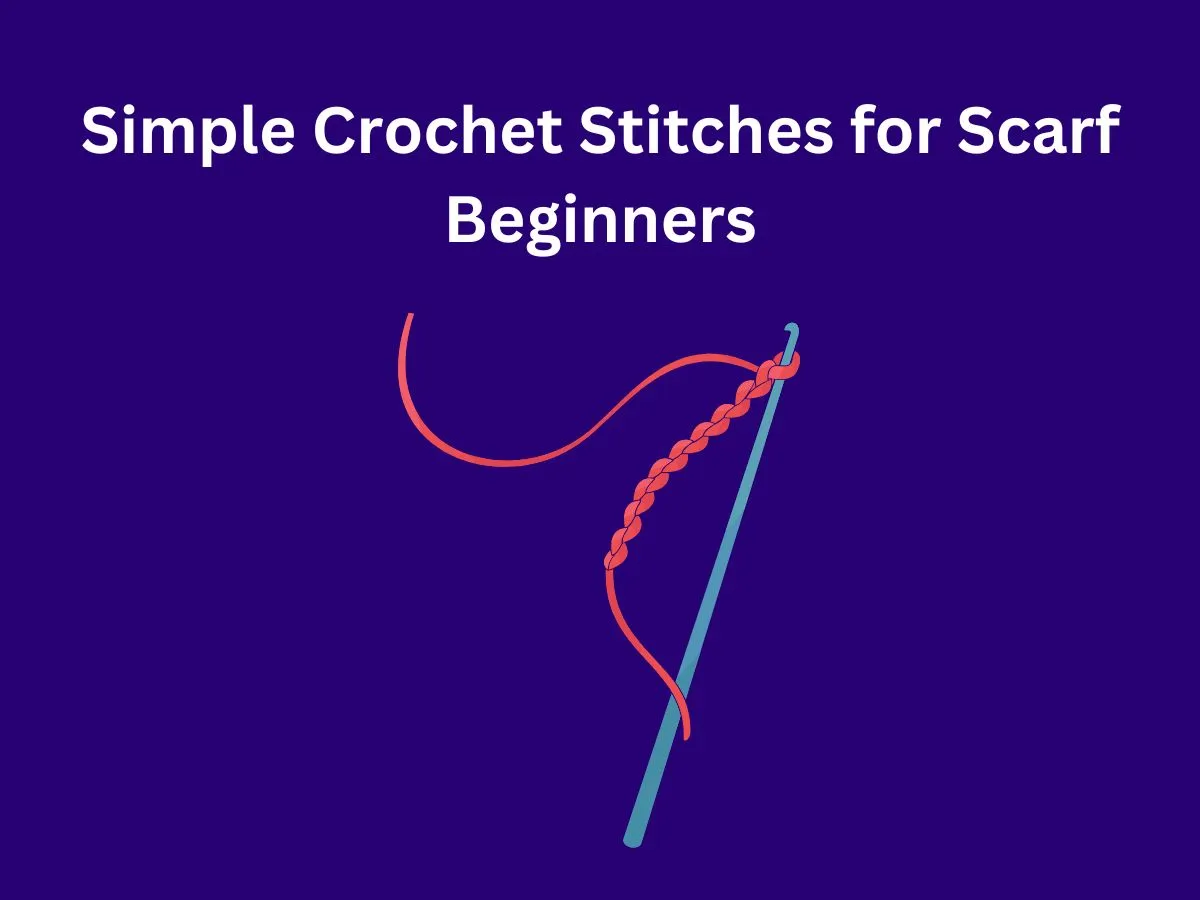
When starting your crochet journey, it’s best to begin with simple stitches. The single crochet (sc) is one of the easiest stitches to learn and perfect for beginners. It creates a tight, sturdy fabric that’s great for scarves. To make a single crochet, insert your hook into the stitch, yarn over, pull through, yarn over again, and pull through both loops on your hook.
Another beginner-friendly stitch is the half double crochet (hdc). It’s slightly taller than the single crochet, which means your scarf will work up faster. The half double crochet creates a nice, medium-weight fabric that’s perfect for scarves. To make this stitch, yarn over, insert your hook into the stitch, yarn over, pull through, yarn over again, and pull through all three loops on your hook.
For those looking to add a bit more texture, the bean stitch is a simple yet effective option. It creates a lovely, puffy texture that looks great in scarves. The bean stitch is worked over an odd number of stitches, making it easy to adjust your scarf width. While it might sound complex, it’s actually quite simple once you get the hang of it.
Easy Crochet Scarf Patterns for Beginners
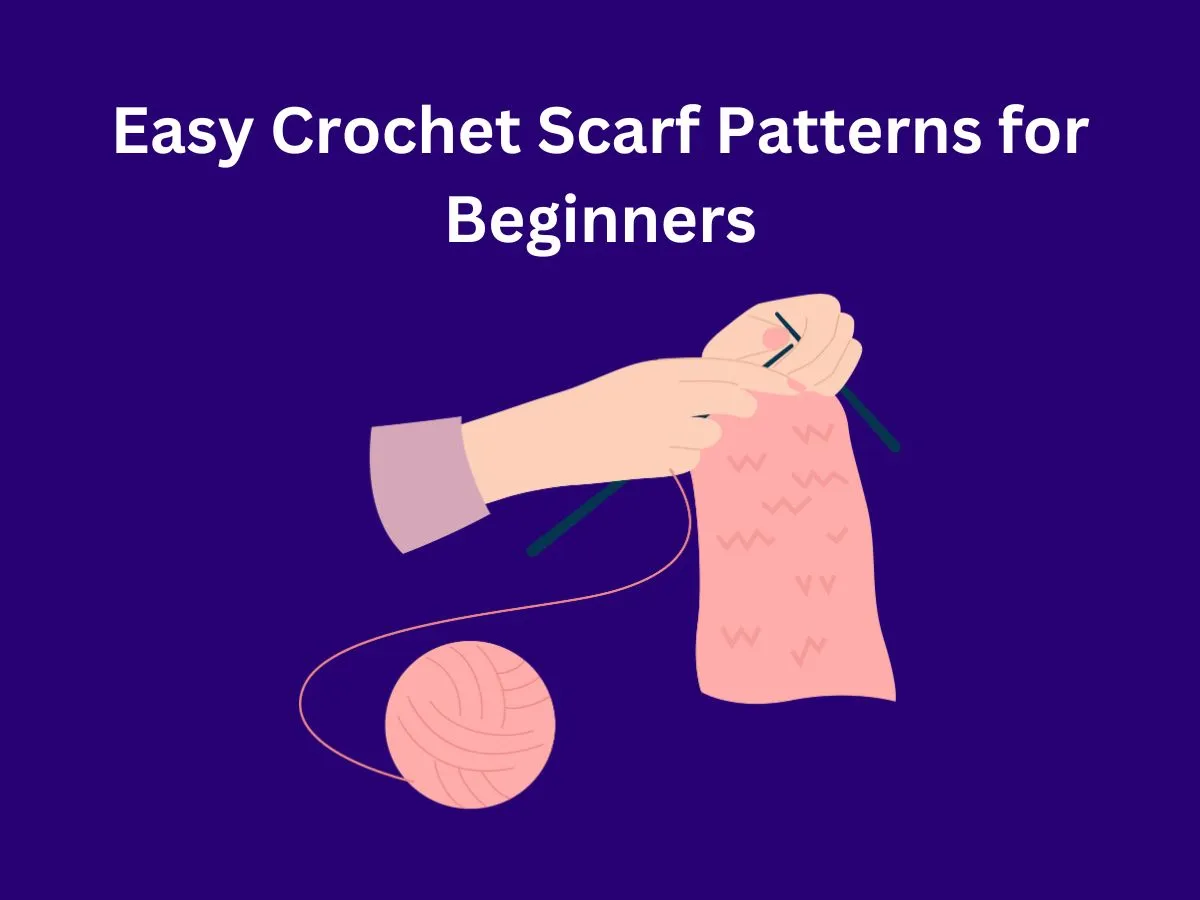
One of the easiest scarf patterns for beginners is a simple rectangle using single crochet stitches. Start by chaining 11, then single crochet in the second chain from the hook and across. For the next rows, chain 1, turn, and single crochet in each stitch across. Repeat this until your scarf reaches your desired length, usually around 101 rows.
Another beginner-friendly pattern uses alternating rows of half double crochet (hdc) and half double slip stitch (hdss). Start with a chain of 185, or however long you want your scarf to be. In the first row, work hdc in each chain. For the second row, work hdss in each stitch. Alternate these two rows until your scarf is about 5 inches wide.
For those who want a bit more texture, try the ribbed scarf pattern. This pattern uses a combination of single crochet and long single crochet stitches to create a ribbed effect. The pattern is a simple three-row repeat that creates a cozy, warm scarf. It’s perfect for beginners who want to try something a little more challenging without being overwhelming.
How to Add Texture and Color to Your Scarf
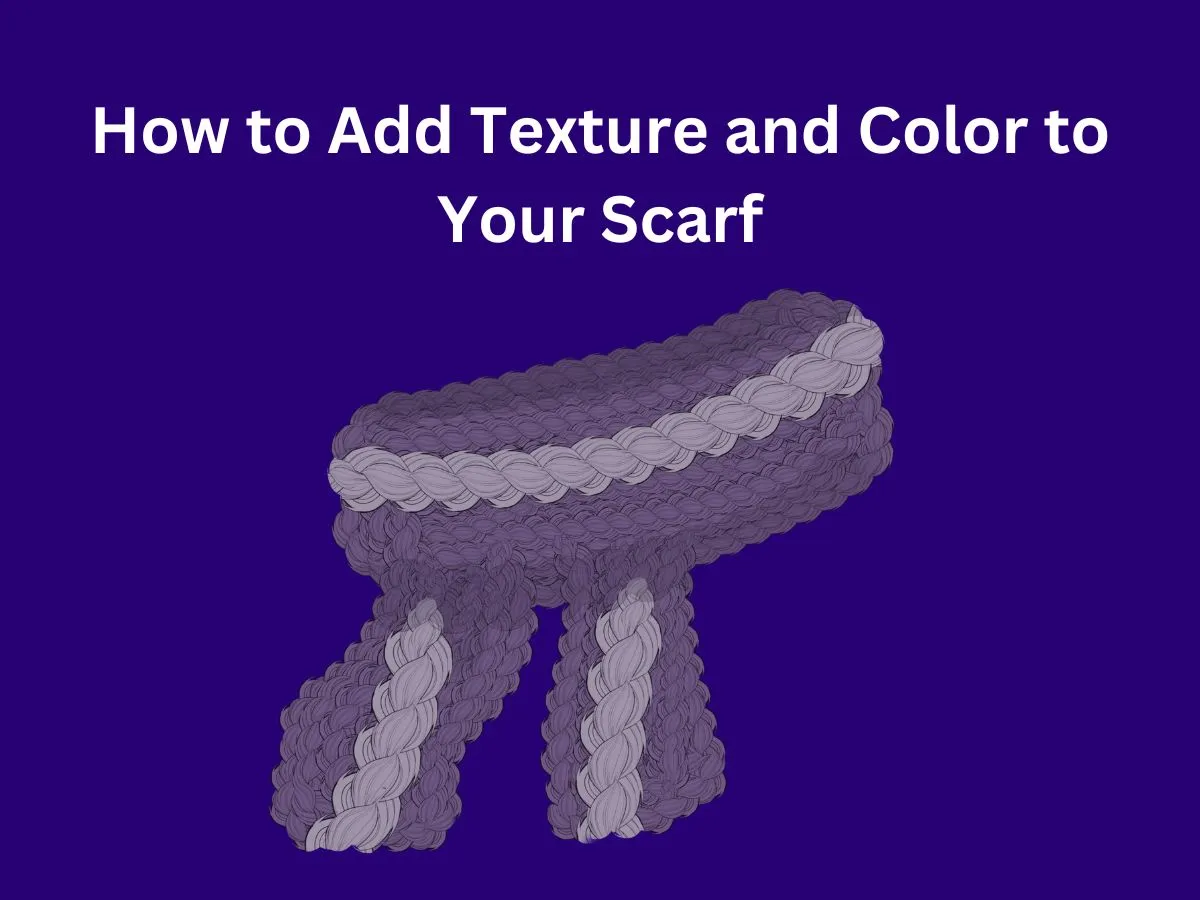
Adding texture to your scarf can make it more interesting and cozy. One way to do this is by using different stitches. The spike stitch, for example, creates a unique texture by working into stitches from previous rows. You can also try the Tunisian simple stitch, which creates a fabric that looks knitted but is actually crocheted.
Color is another great way to make your scarf stand out. You can create stripes by changing yarn colors at the end of rows. For a more subtle effect, try using variegated yarn that changes color as you crochet. You can also experiment with color blocking by using different colors for different sections of your scarf.
Don’t be afraid to mix textures and colors in your scarf. You could use a textured stitch like the bean stitch in one color for part of your scarf, then switch to a simpler stitch in a contrasting color. Remember, the key is to have fun and create a scarf that you’ll love to wear. As you get more comfortable with crocheting, you can try more complex color and texture combinations.
Tips for Measuring and Sizing Your Scarf
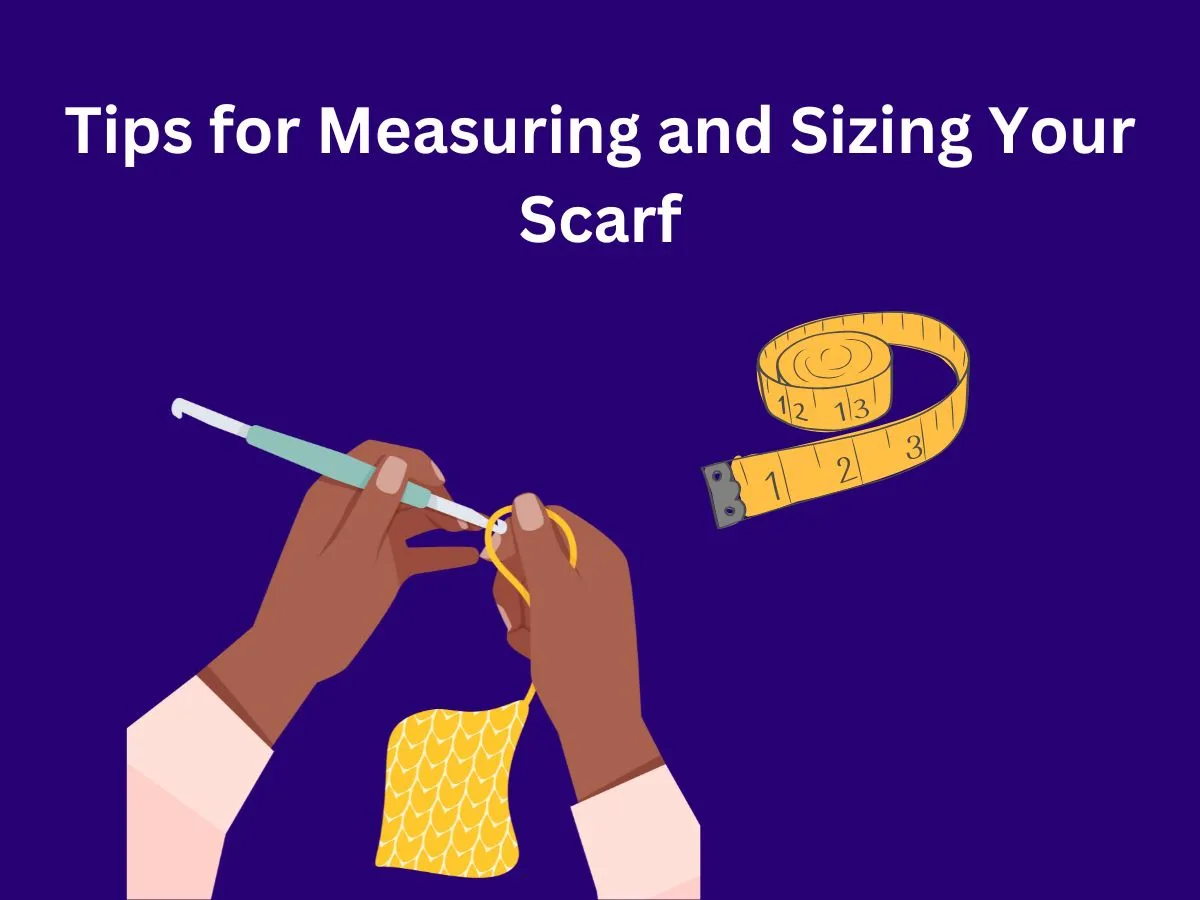
Getting the right size for your scarf is important for both style and comfort. For adults, a standard scarf is usually 6 to 8 inches wide and 60 to 70 inches long. This gives you enough length to wrap the scarf and style it different ways. If you want a longer scarf, aim for 80 to 90 inches in length. For children, scarves are usually shorter and narrower. A child’s scarf might be 4 to 6 inches wide and 40 to 55 inches long.
There are some fun traditional ways to measure scarf length too. One method is to spread your arms out wide and measure from fingertip to fingertip. Another is to make the scarf as long as you are tall. For width, you can use your hand span – the distance from your thumb to your pinky when your hand is spread out. These methods work well because they naturally adjust to different body sizes.
When you’re making your scarf, it’s a good idea to measure as you go. Use a tape measure to check your width after the first few rows. For length, measure every so often to make sure you’re on track. Remember, you can always adjust the size to fit your personal style. Some people like extra long scarves, while others prefer shorter ones. The most important thing is that you’re happy with the final result.
Common Mistakes to Avoid When Crocheting a Scarf

When making a scarf, there are some common mistakes to watch out for. One big mistake is not counting your stitches as you go. This can lead to your scarf getting wider or narrower without you noticing. To fix this, count your stitches at the end of each row. Another mistake is forgetting to crochet into the first stitch of a row. This can make your scarf get smaller over time. Always make sure to work into that first stitch after you turn your work.
Using the wrong hook size is another common error. If your hook is too big for your yarn, your stitches might look loose and floppy. If it’s too small, your scarf might turn out stiff. Check your yarn label for the recommended hook size. Also, be careful not to confuse U.S. and U.K. hook sizes, as they’re different. Making a gauge swatch can help you check if you’re using the right hook size.
Lastly, choosing the wrong yarn can cause problems. Some yarns are harder to work with, especially for beginners. Avoid very fuzzy or slippery yarns when you’re starting out. Also, think about how you’ll use the scarf. For example, don’t use acrylic yarn for something that might get hot, as it can melt. Cotton or wool are often better choices for warm, cozy scarves.
Where to Find Inspiration and Patterns for Your Scarf Projects
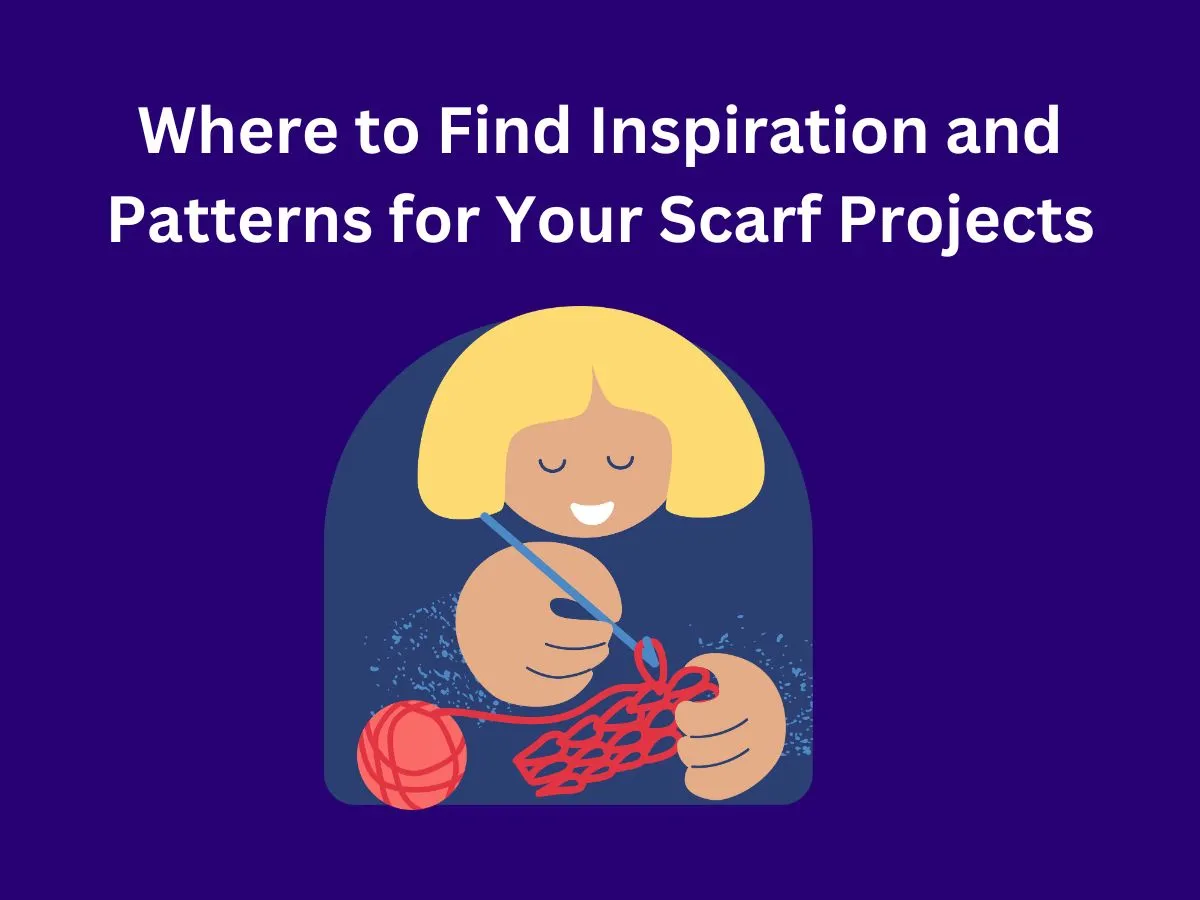
Finding inspiration for your scarf projects can be fun and easy. One great place to start is online platforms like Pinterest or Instagram. These sites are full of beautiful crochet projects that can spark your creativity. You can save ideas you like and come back to them later. Websites like Ravelry and Etsy also have thousands of patterns, including many free ones.
Crochet magazines and books are another excellent source of patterns and inspiration. Many libraries have craft sections where you can browse for free. Don’t forget to look at the world around you for inspiration too. Nature, architecture, and even everyday objects can give you ideas for colors and patterns. For example, some designers have been inspired by paintings to create unique scarf patterns.
If you’re a beginner, look for patterns that are labeled as easy or beginner-friendly. Many websites offer collections of simple scarf patterns that are perfect for those just starting out. These often include basic stitches and straightforward designs. As you get more comfortable with crocheting, you can try more complex patterns or even create your own designs. Remember, the best inspiration often comes from trying new things and practicing your skills.
Final Thoughts
Now that you’re equipped with these tips and patterns, you’re ready to start crocheting your own beautiful scarves! Consider putting these tips into practice and making your first or tenth, ever scarf. Note, that with a little practice, you can make cozy and stylish accessories for yourself and others.
Do not be afraid to experiment with different colors, yarns, and stitches to express your unique style. If you ever need more help or just want to share your creations, feel free to contact me at info@madeehamedia.com. Happy crocheting, and enjoy the warmth and satisfaction of your handmade scarves!
Frequently Asked Questions
Q1: What’s the best yarn for a beginner’s crochet scarf?
A: Medium-weight acrylic yarn is affordable and easy to work with.
Q2: What size crochet hook should I use?
A: A size H (5mm) hook works well for medium-weight yarn, but check your yarn label.
Q3: How long should I make my crochet scarf?
A: A standard adult scarf is 60-70 inches long, but adjust to your preference.
Q4: How do I prevent my scarf from getting wider or narrower as I crochet?
A: Count your stitches at the end of each row and make sure you’re crocheting into the first stitch.
Q5: What are some easy crochet stitches for scarves?
A: Single crochet, half double crochet, and the bean stitch are great for beginners.
Q6: How do I add stripes to my crochet scarf?
A: Change yarn colors at the end of rows and weave in the loose ends.
Q7: What’s a gauge swatch and why is it important?
A: A gauge swatch is a small sample to check your stitch size; matching gauge ensures your scarf is the right size.
Q8: How do I keep my crochet scarf from curling?
A: Use a looser tension, try a different stitch pattern, or block your finished scarf.
Q9: Where can I find free crochet scarf patterns for beginners?
A: Websites like Ravelry, Etsy, and many crochet blogs offer free patterns.
Q10: What are some common mistakes to avoid when crocheting a scarf?
A: Not counting stitches, using the wrong hook size, and skipping pattern instructions.